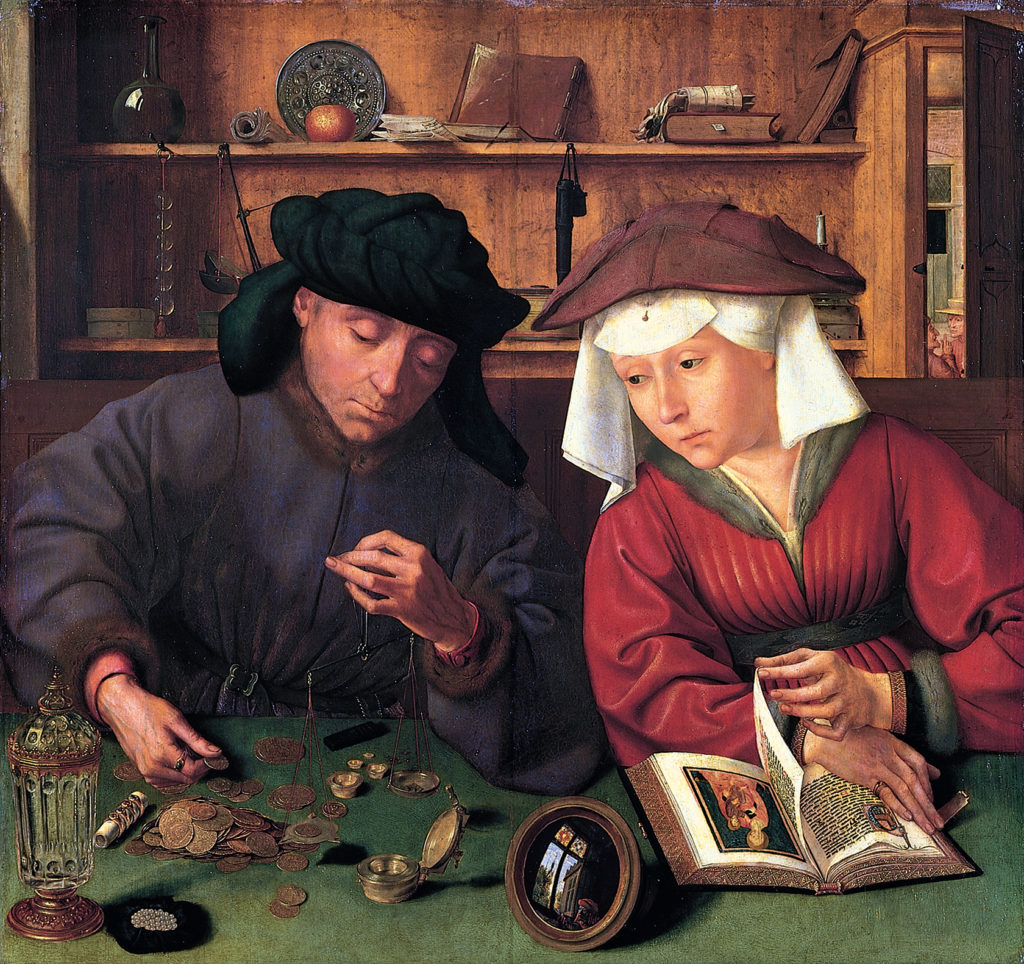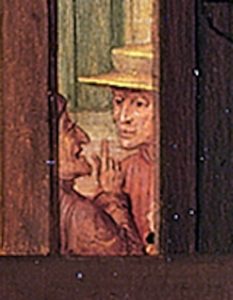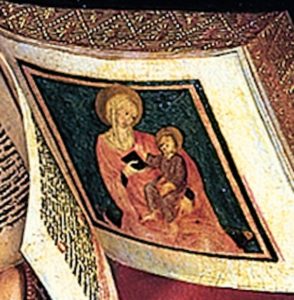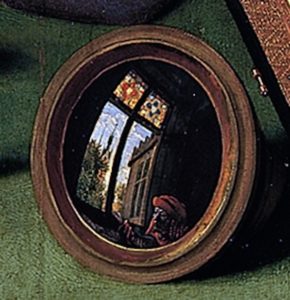Is money transcendent or immanent?
Some might suggest that money is the preeminent symbol of immanence. It enables exchange, the dyadic interface of two agents, passing values about on the same plane. It requires no “outside.” Money has supposedly become the be-all and end-all of our age, as the horizon of the good, and, as such, forges a closed, self-contained system. The modern era, the age of immanence, is also the age of money and capital, as economy has come to ground and delimit much of how we understand ourselves. Money and its preponderance appear correlated to the immanent.
Others may counter that money appears irrevocably tied to transcendence. After all, money only works by serving as an abstract “third” position to mediate two incommensurate articles of exchange. Money signifies value, itself an ethereal category not fully exhausted by materialist definitions. Money “stands above” the plane of objects of labor, commodities, and use-values. Some might press further to claim that money has usurped the place of God in societal imagination, trading on theological residues to become the index for ultimate concern and even sovereign decision. Implied here is a critique of false transcendence. The immanent has overstepped its place. Which brings us full circle.
Perhaps unsurprisingly, this circularity reveals the shortcomings of the opening query. It cannot be asked meaningfully without specifying the types of immanence and transcendence in question, for clearly their registers are multiple, layered, and textured.
The modes of immanence and transcendence invoked and engendered by money are tied to the broader question at hand, the inquest concerning the limits of our present order or at least of our current capacities for perception. Over the last ten years, questions concerning the remaining spaces of hope—in particular, hope within an immanent frame—have intensified. Years after Francis Fukuyama hailed with melancholic resignation the end of history, the supposed triumph and totalization of global capital remains tied to concerns about a loss of transcendence. Without the agonism of economic alternatives and manifest visions of different modes of production, can we still posit an “outside” to our moment? Is this all that there is?
Quentin Massys’s The Moneychanger and his Wife (1514) was forged during the birth pangs of the modern. Three years before Martin Luther nailed his 95 Theses to the door of the Wittenberg Cathedral, Antwerp was already a hotbed of innovative economic activity, global exchange, and shifts in perspective and aesthetic representation. The city easily serves as a proxy for the northwestern European communities posited by Max Weber as the forerunners of capitalism, awaiting their Calvinist discipline.

The picture is awash with symbolism, itself a reminder of a prior regime of representation still open to the depth of the sign. This was an age where money was believed to possess inherent value, matching the gold of which it was comprised. Just as value inhered in the material object of exchange—gold money as commodity money—the meaning inhered in the symbolic. Representation was latent and rich.
Of the many possible symbolic subtleties to notice in this scene is the economy of gazes, as the visible itself is crossed with multiple glances and regards. The interplay of gazes takes up directly matters of transcendence and immanence. Space, enclosure, representation, and questions of a surplus “beyond” are evoked in this scene of monetary exchange.
Most centrally, the moneychanger inspects his coins, weighing them and considering the marks they bear, the standards that speak to minting apparatuses under the authority of some sovereign, near or far. As a moneychanger, he has become familiar with these symbols of power from around the globe, as his port city had become a cosmopolitan crossroads of mercantile exchange. His wife looks on, surprisingly transfixed by the coin and her husband’s assessments, despite no doubt long being privy to such rituals such that they should have become prosaic. The trajectories of their gazes meet in the unifying power of currency. For the moment, at least, money does indeed appear to be their mutual horizon.
 But the space is not closed. Additional looks and regards open it up. Their door stands ajar, and, in the middle distance, a conversation in the streets draws our gaze. Two passersby greet each other, trading glances and words. Their mundane encounter signals that the exchanges in this shop mean nothing without the commerce outside. That dusty street and their worldly, profane interchange may in fact be the anchor that grounds the whole of this scene, linking it to Earth.
But the space is not closed. Additional looks and regards open it up. Their door stands ajar, and, in the middle distance, a conversation in the streets draws our gaze. Two passersby greet each other, trading glances and words. Their mundane encounter signals that the exchanges in this shop mean nothing without the commerce outside. That dusty street and their worldly, profane interchange may in fact be the anchor that grounds the whole of this scene, linking it to Earth.
 The economy of gazes continues to circulate. The wife’s prominently displayed book of hours reveals the illuminated, iconic regard of the Virgin Mother and infant. Mary looks down at the Christ-child, reading to him from a book, as he beams beatifically back at her. As an icon, their mutual gazes converge to behold and take in the would-be penitent onlooker. But the worshipper here is distracted, as the gleam of the precious metal beside her has purchased her gaze away.
The economy of gazes continues to circulate. The wife’s prominently displayed book of hours reveals the illuminated, iconic regard of the Virgin Mother and infant. Mary looks down at the Christ-child, reading to him from a book, as he beams beatifically back at her. As an icon, their mutual gazes converge to behold and take in the would-be penitent onlooker. But the worshipper here is distracted, as the gleam of the precious metal beside her has purchased her gaze away.
 The centrally placed mirror on their table clues us in to another point of view. The mirror reflects an open window, and our gaze is taken, via this series of rebounds, toward the heavens. As if to emphasize the spiritual referent of this redirection, the steeple of a church is visible in the distance. Here, the iconic capacity of the entire image is underscored, as we as spectators have our own regards drawn up into the site of transcendence. Just as icons serve as windows to heaven, here the painting functions explicitly so, if still refracted, such that we “see through a glass [or mirror] darkly” (1 Corinthians 13:12). The window to the lofty heavens functions as counterpoint to the door ajar to the mooring street.
The centrally placed mirror on their table clues us in to another point of view. The mirror reflects an open window, and our gaze is taken, via this series of rebounds, toward the heavens. As if to emphasize the spiritual referent of this redirection, the steeple of a church is visible in the distance. Here, the iconic capacity of the entire image is underscored, as we as spectators have our own regards drawn up into the site of transcendence. Just as icons serve as windows to heaven, here the painting functions explicitly so, if still refracted, such that we “see through a glass [or mirror] darkly” (1 Corinthians 13:12). The window to the lofty heavens functions as counterpoint to the door ajar to the mooring street.
In this murky mirror, a final gaze emerges. We discover that the moneychanger and his wife are not alone but undertake this monetary evaluation before an audience. A man stands at the window, looking down upon them at their table. He, too, is reading a book, remarkably mirroring the posture of the Virgin. He is turbaned and clothed in rich fabrics of bright orange and red. Whether or not the figure is intended to signify the artist himself, the clothing marks him as foreign, as from the “Orient” and possibly a Moor. The role and responsibility of the moneychanger are underscored, as he must appraise currency from another land. Perhaps the wife gazes on because she is interested in these exotic, foreign tokens. Perhaps she is suspicious. Indeed, Mary herself looks out on this evaluation, as if to remind the Moor of the “true” faith and to verify whether his exchange media are trustworthy.
The open window and the turbaned “oriental” bring into sight the global story of money and capital in the West. It is a polycentric tale that cannot forget the colonial encounter, as well as attempts to both manage and bypass the Near East. Even as European bankers and traders appropriated the calculus of double-entry bookkeeping from the Arabs, and in so doing generated conceptual changes that enabled capitalism, they sought trade routes that superseded—or transcended—the Silk Road. Explorers circumnavigated the globe to avoid that ancient enemy, the Islamic empires at Europe’s gates. Vasco da Gama and Christopher Columbus wanted to reach India and the Far East without dealing with the turbaned Moors who stood in the way, obscuring the view.
The ever-expanding and flattening web of monetized relations under capital was comprised of multiple centers of otherness, microcosms of transcendent difference. The immanent absorbed and digested the transcendent, generating new forms of transcendence in its wake. A third space and sacred canopy settled in above and around the globe. No one is looking up out the window. Even the Moor’s gaze here is turned down toward his book.
Is money, as the saturated phenomenon of our age, stifling? Has it blotted out the sky? Perhaps.
We have been in the moneychanger’s shop for five hundred years and have rightly grown weary of assessing the gold. We have progressed from seeking its inherent worth as weighed, to acknowledging its power as found in its surface and gleam. The coins dazzle in stultifying wonder. The currency draws all gazes toward its defined horizon.
The open window offers little escape. For to gaze out would be to daydream while remaining rooted within the confines of the shop.
But the back door remains ajar.
Whether through dumb luck, catastrophe, or sheer force of will, we might pry open that egress and stumble out into the street, to look into each other’s eyes and speak with each other again, face to face.












